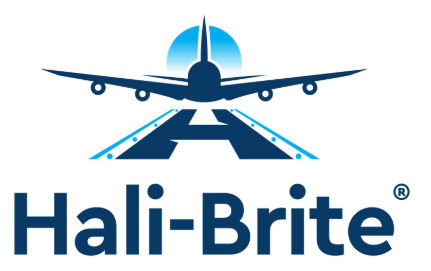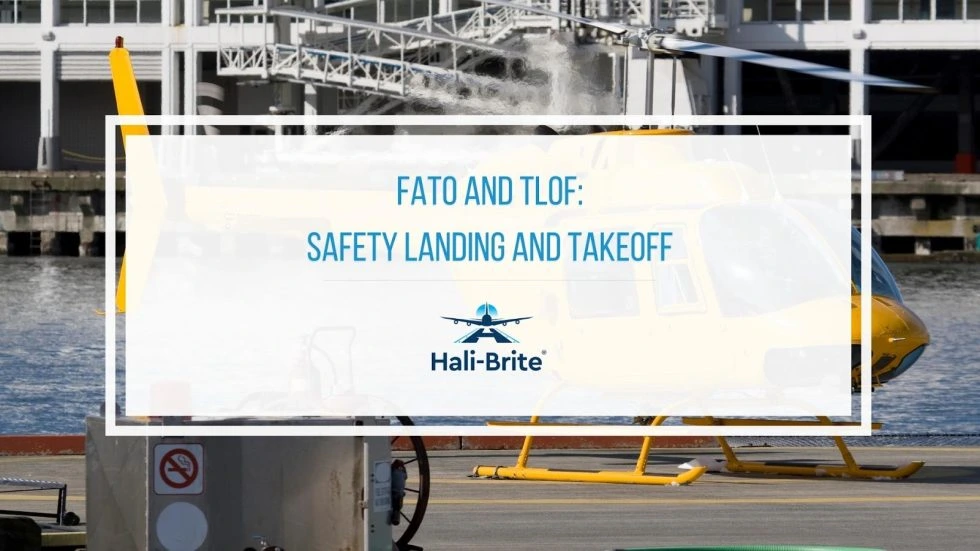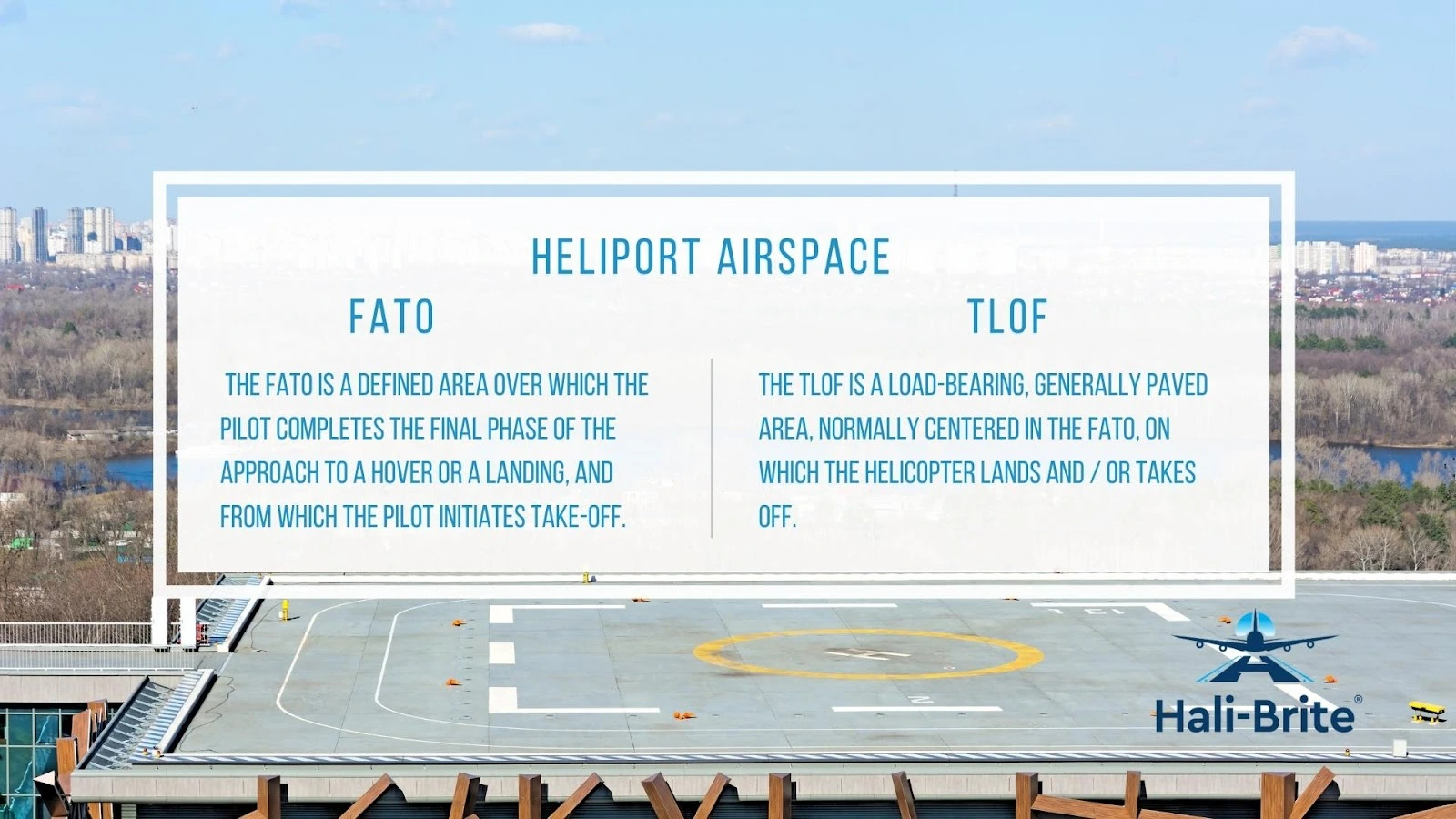People who work around helicopters must observe the safety guidelines during landing and takeoff in heliports. Understanding the hazards and taking precautions involving heliport operations protects the pilot and everyone in the immediate surrounding.
Following heliport safety protocols prevents unfortunate accidents from happening. Moreover, it also promotes efficient landing and takeoffs that minimize delays.
Every establishment with a helipad must brief its staff on the safety guidelines in this area. It’s also essential to review the protocols at the change of seasons to avoid any negligence.
- What Is FATO?
- What Is TLOF?
- How TLOF and FATO Help Heliport Operations
- Heliport Clearways and Safety Areas
What Is FATO?
Three distinct regions comprise the Primary Surface or the heliport’s airspace. The Final Approach and Takeoff (FATO) is an area where the pilot performs the last phase of the approach before hovering and landing.
It is also the middle ring area of the Primary Surface and nearest to the outermost outer layer, called the Safety Area.
FATO Design
According to the requirements set by the Federal Aviation Administration (FAA) and the International Civil Aviation Organization (ICAO), here are the basic parameters a FATO should have:
- It must be at least 1.5 times the total length of the helicopter
- The safety area’s width must be at least 0.33 times that of the rotor diameter, but not less than six meters (20 feet)
- It should have at least two paths for approach and departure; one of the paths must be aligned with the predominant wind’s direction
- For the helipad to operate at night, it must have the proper heliport lighting and visual aids
What Is TLOF?
Touch-down and Lift-Off (TLOF) is another critical area of a helipad. It’s a paved and load-bearing area where the helicopter takes off or lands. This section is also the center of the Primary Surface and is easily identifiable because of its “H” marking.
This area also has an information box that tells the aircraft gross weight rating of the helipad and the maximum size of the helicopter it can accommodate.
TLOF Design
The FAA and ICAO have set these parameters when it comes to the basic layout and design of the TLOF:
- It must have an area that is as long as the largest helicopter that will use the heliport
- The width of the TLOF must be as wide as the rotor diameter
- For night operations, it must have a signalization system
- It can be circular with at least 14 lights or square with at least four lights for each side
How TLOF and FATO Help Heliport Operations
TLOF and FATO are essential areas that help pilots navigate their way when landing and taking off on a helipad. They give visual cues to the pilots where to land safely. Thanks to its lighting signals and other visual aids, you can quickly identify them on the ground while the helicopter is in flight.
The markings on these areas also help pilots know which is the approach and departure part of the helipad. These features make it easier for the pilot to execute takeoff and landing maneuvers once they know the TLOF and FATO layout.
Heliport Clearways and Safety Areas
Most performance class 1 helicopters may require a clearway to provide an area where the vehicle can accelerate. Very few helicopter models require a clear way for them to operate.
Clearways are often located outside the end of the FATO, and their width should not be less than that of the designated safety area. It can be overground or water but should not be load-supporting. In a clearway, the ground should have an upward slope of less than 3 percent of the horizontal line.
A safety area is required to surround a FATO. The designated safety area allows pilots to compensate for errors when hovering, maneuvering, and landing the aircraft.
Surface-level heliports should be at least three meters or 0.25 D (added to all sides), and the area should not be less than 2D if it’s circular or square. Meanwhile, elevated or rooftop heliports have almost identical specifications to surface-level heliports that run a PC1 VMC operation.
No other object is allowed in the safety area except for function lights and visual aids.
Heliport FATO and TLOF Lightings
Proper design of the FATO and TLOF areas is crucial for the safety not only of the pilots but everyone who uses the helipad. Thus, it is crucial not only to follow the aviation industry’s guidelines on building a helipad but also to use the most effective heliport lighting system in the market.
At Hali-Brite, we know the value of an outstanding lighting system and why it’s a worthwhile investment for your helipad. We provide numerous FAA-certified lighting solutions and products that give excellent visibility during night operations. Contact us here today and get your free quote.


